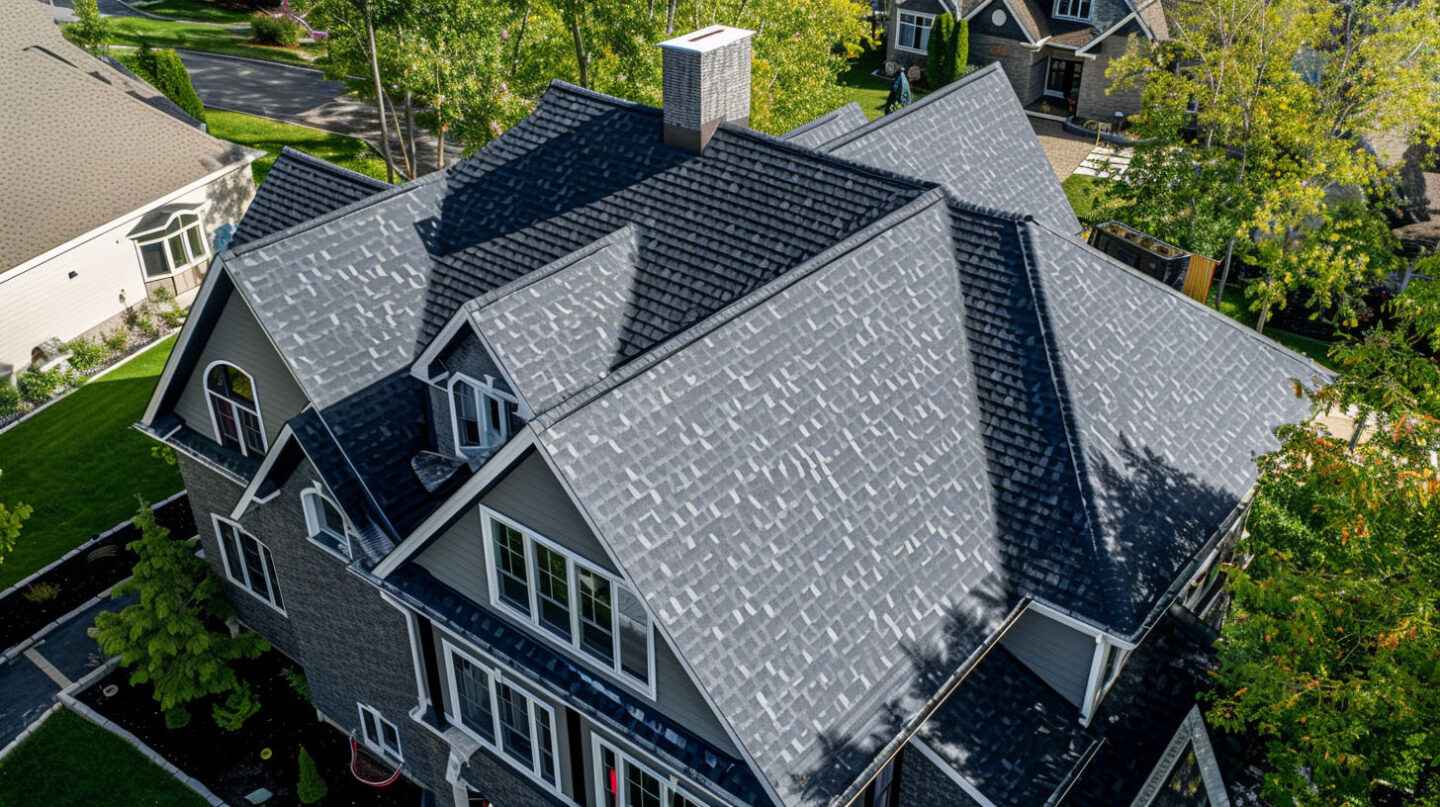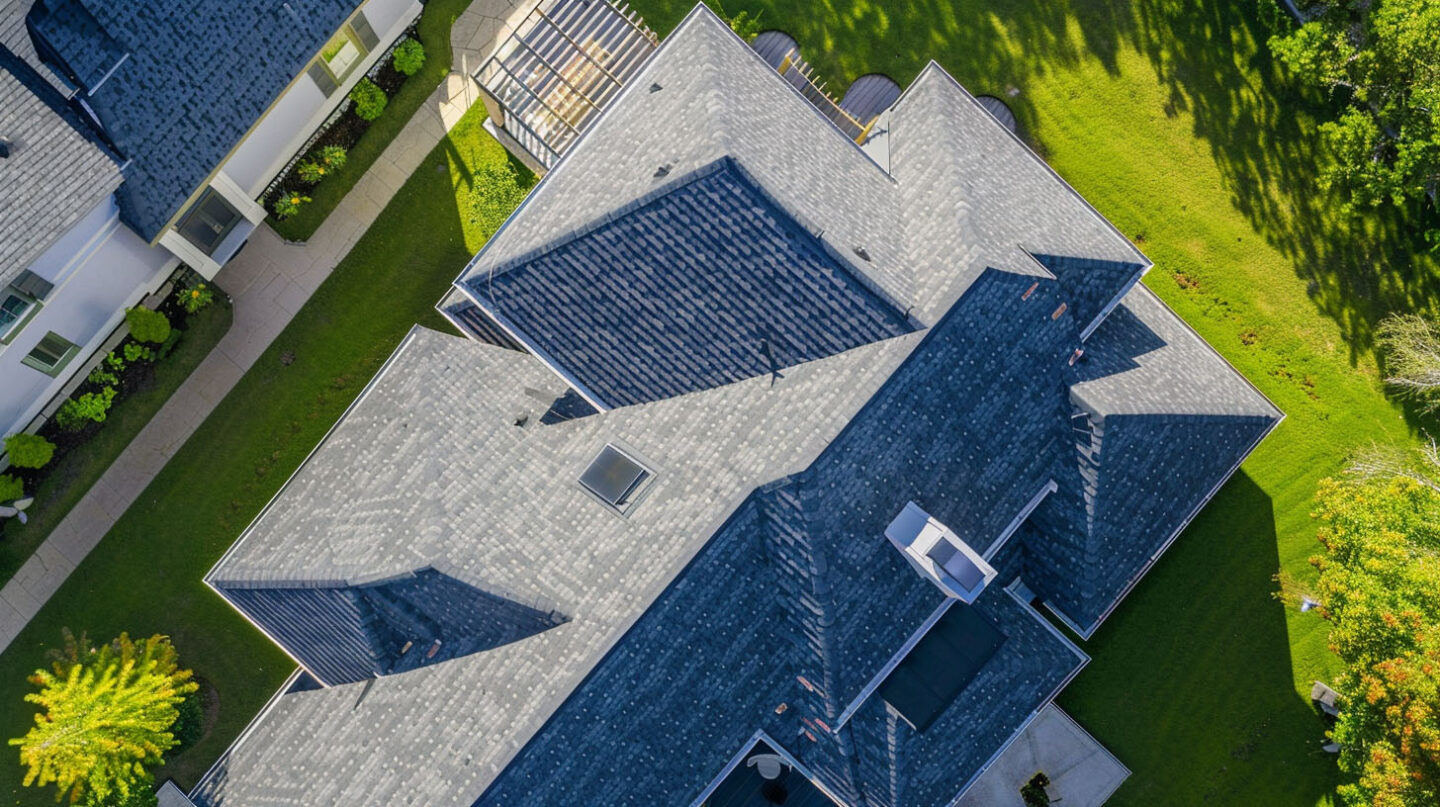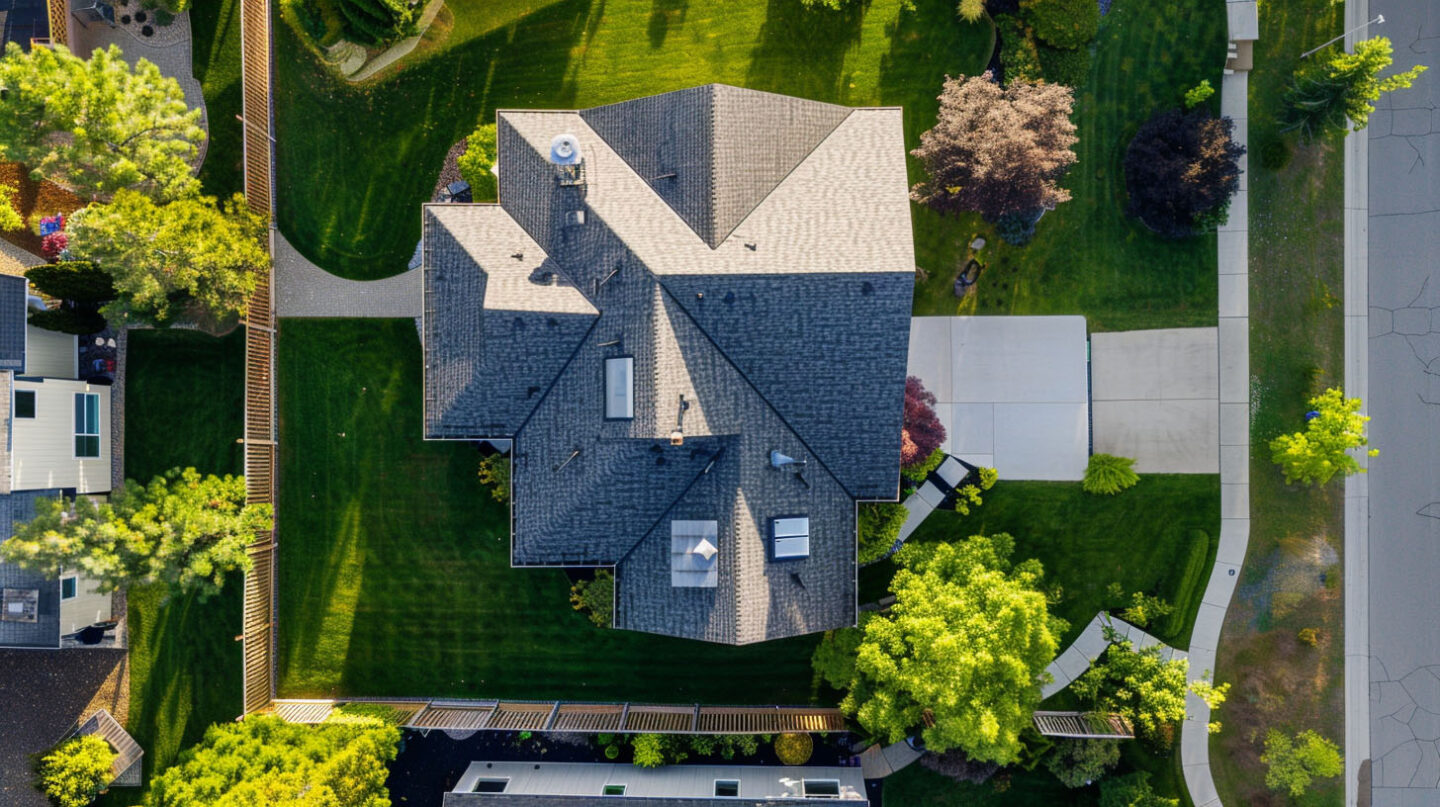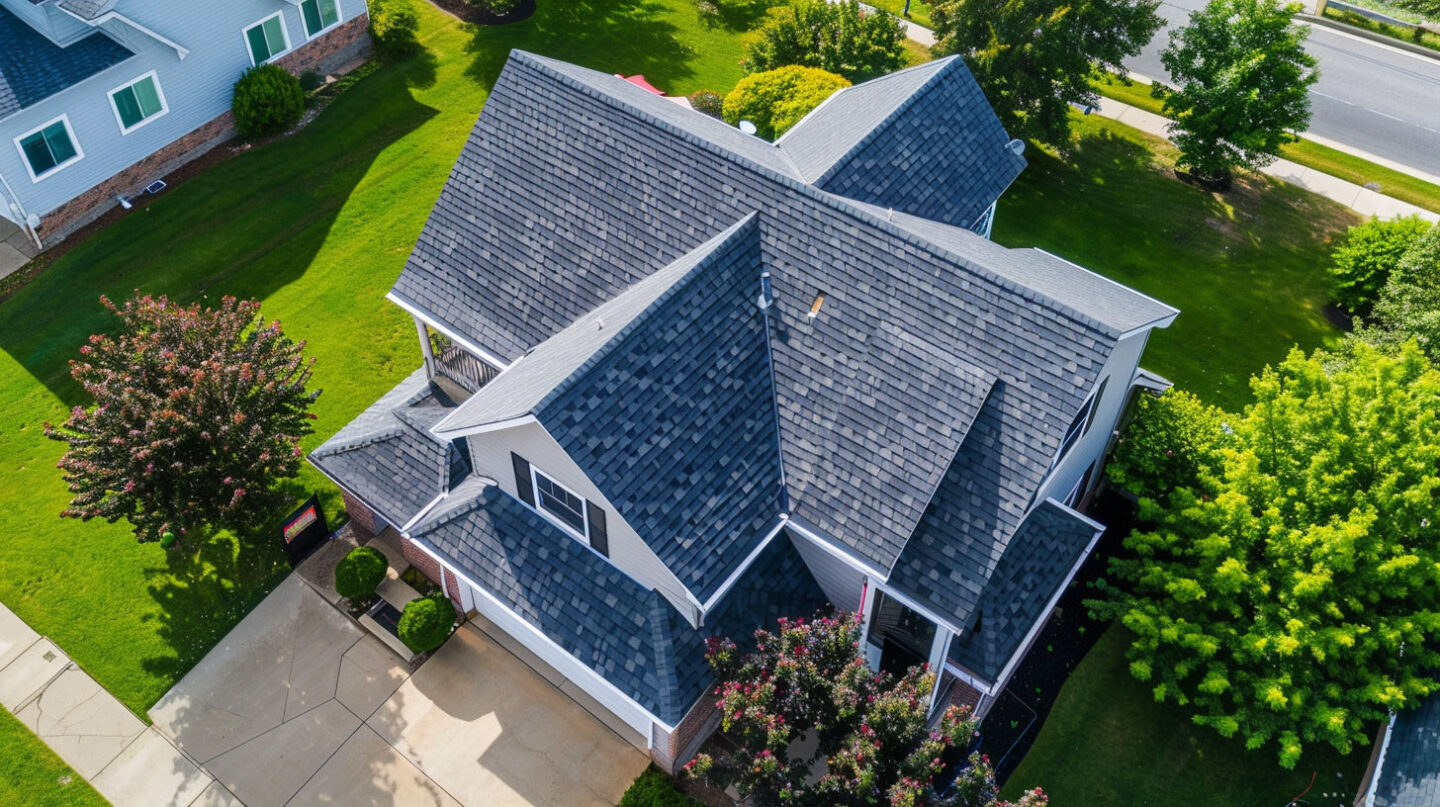When you sell your home or refinance it, a home appraisal is an extremely important step. The appraiser’s job is to determine the fair market value of your home, and to do so, we assess the overall condition of the property. While the appraiser looks at many aspects, one of the most important is the condition of your roof. The state of your roof can significantly influence the overall value of your home. At The Shingle Master, we believe in “Protecting What Matters,” and that starts with understanding how your roof contributes to your home’s worth in Clayton, NC.
Why Roof Condition Matters in Home Appraisals
Roof condition plays a pivotal role in the appraisal process, as it significantly influences a home’s overall value. Appraisers assess the state of the roof not just for aesthetic purposes but also to gauge the structural integrity and potential issues that may affect safety. A well-maintained roof can enhance curb appeal and reflect positively on the appraisal value, while signs of water damage or poor maintenance may raise red flags for potential buyers and mortgage lenders, ultimately impacting the home’s marketability.
How Roof Health Impacts Appraised Value
The state of a roof heavily influences a home’s appraised value, as appraisers assess both its condition and longevity. A well-maintained roof not only enhances curb appeal but also signals structural integrity, which can attract potential buyers. Conversely, visible signs of water damage or decay may raise red flags during the appraisal process, impacting the overall value of the home. Investing in roof repairs or upgrades can lead to a more favorable appraisal outcome, ensuring better market positioning.
Role of Roofing in Overall Home Safety
A solid roof plays a crucial role in ensuring the safety and well-being of a household. It acts as the primary barrier against weather elements, preventing water damage, leaks, and mold growth, which can pose serious health risks to occupants. Additionally, a well-maintained roof contributes to the overall structural integrity of the home, safeguarding against potential hazards that could endanger lives. Ultimately, when appraisers evaluate a property, they recognize that a reliable roofing system enhances the appeal and safety for future homeowners.

Specific Roof Features Appraisers Inspect
Several key features regarding the roof are meticulously examined by appraisers during the appraisal process. The type and material of the roofing system, such as asphalt shingles or metal roofing, can significantly influence the assessment. Additionally, the roof’s age and expected lifespan play a crucial role in determining its overall condition. Appraisers also look for the quality of recent repairs or upgrades, as they can impact not just the roof’s integrity but also the value of your home in the long run.
Material and Type of Roofing System
Both the material and type of roofing system play a critical role in determining a home’s value during an appraisal. Appraisers often assess various roofing materials, such as asphalt shingles, metal roofing, or tile, to evaluate their durability and aesthetic appeal. A well-chosen roofing system not only enhances curb appeal but also contributes to energy efficiency and long-term value. Potential buyers are more likely to invest in a home that features a reliable, modern roofing system, as it reflects the property’s overall condition and structural integrity.
Roof Age and Expected Lifespan
A roof’s age plays a critical role in determining its expected lifespan and, consequently, the appraised value of your home. Most roofing systems offer a range of durability, often influenced by materials like asphalt shingles or metal roofing. Appraisers typically evaluate how many years are left before significant repairs or a complete replacement may be needed. This assessment not only impacts the current condition but also highlights potential future costs for prospective buyers, affecting their decision-making and your home’s overall value.
Quality of Recent Repairs or Upgrades
Each appraisal considers the quality of recent repairs or upgrades as an essential factor in determining a home’s value. Home appraisers closely evaluate the materials used and the craftsmanship of these modifications. A well-executed upgrade, such as a new roof or improved ventilation, can enhance energy efficiency and demonstrate the overall condition of the property. This aspect reassures potential buyers about the home’s maintenance and can significantly impact appraisal value, ensuring a positive reflection of the overall value of your home.
Common Roof Issues That Can Lower Valuation
Signs of Water Damage and Leaks
Identifying signs of water damage is crucial for maintaining your roof’s integrity and the overall condition of your home. Appraisers pay close attention to visible leaks, stains on ceilings or walls, and the presence of mold growth, as these indicate potential structural issues. Missing shingles or compromised flashing can also lead to leaks, raising red flags during the appraisal process. Addressing these concerns not only enhances the curb appeal but also safeguards the appraised value of your home for potential buyers.

Missing Shingles, Tiles, or Panels*
The presence of missing shingles, tiles, or panels significantly influences the appraisal value of a home. Appraisers view such deficiencies as red flags, indicating potential neglect or underlying structural issues. This condition not only affects curb appeal but can also lead to water damage, compromising the overall integrity of the roof. Future homeowners may factor in the cost of necessary repairs, which can lower the perceived value of your home. Thus, maintaining a complete and intact roofing system is essential for ensuring a successful appraisal.
Sagging, Dips, and Structural Problems
Visible sagging or dips in a roof are serious red flags for appraisers. These issues often indicate underlying structural problems that can diminish the overall value of your home. Potential buyers may view significant dips as a sign of neglect, fearing costly repairs. A thorough inspection can reveal whether the roof’s support system is compromised, impacting the home’s safety and energy efficiency. Addressing these concerns promptly ensures a more favorable appraisal value and adds to the overall curb appeal of your property.
Indicators of Roof Damage Appraisers Often Note
Visible signs of damage are crucial indicators that appraisers carefully evaluate during the appraisal process. Common red flags include mold growth, which can signal moisture issues, as well as algae and mildew that can compromise the roof’s integrity. Gutter and drainage problems also draw attention, reflecting potential water damage risks. Additionally, noticeable wear from age or storms can diminish your home’s value, impacting a prospective buyer’s perception of the property. Addressing these concerns ensures your roof maintains its appeal and maximizes valuation.
Mold, Mildew, and Algae Growth
Visible signs of mold, mildew, and algae can significantly affect the appraisal value of your home. These issues not only compromise the aesthetic appeal but also indicate potential underlying problems, like water damage, that could deter future homeowners. Appraisers are keen to evaluate the overall condition of the roof, and the presence of these growths may serve as a red flag during the appraisal process. Addressing these concerns demonstrates proactive maintenance, thereby enhancing both curb appeal and the home’s value.
Gutter and Drainage Problems
Gutter and drainage issues can significantly affect a roof’s appraised value. Appraisers often look for proper water management to prevent costly repairs associated with water damage. Clogged, broken, or improperly installed gutters can lead to overflowing water, which may compromise the structural integrity of the home. Many potential buyers also focus on these aspects, as they signal underlying maintenance problems. Ensuring gutters are in good shape not only enhances curb appeal but also fosters confidence in the overall condition of the property.

Visible Wear from Weather or Age
Signs of visible wear from weather or age can significantly impact the home’s value during the appraisal process. Appraisers look for fading, granule loss, or discoloration on roofing materials, which may indicate that the roof is reaching the end of its expected lifespan. These factors can raise red flags for potential buyers and lenders alike. Regular inspections and maintenance are essential to mitigate these issues, ensuring the roof remains in good condition, thereby supporting a favorable appraisal value for the property.
Should You Repair Your Roof Before the Appraisal?
Repairing your roof before an appraisal can significantly enhance its value. A well-maintained roof indicates care, potentially leading to a higher appraised value. Prioritize visible issues and consider repairs that yield the most impact for your investment. This proactive approach can pay dividends during valuation.
Benefits of Roof Maintenance and Roof Replacement
Regular roof maintenance and timely replacement offer significant benefits that can enhance the value of your home. By ensuring your roof is in excellent condition, you improve energy efficiency and curb appeal, attracting potential buyers. A well-maintained roof minimizes the risk of costly repairs, safeguarding your investment. Replacing an aging or damaged roof not only boosts your home’s appraisal value but also reinforces its overall structural integrity, providing safety for your family. Investing in your roof pays off in the long run!
How to Prioritize Repairs for Maximum Impact
Addressing repairs in order of importance can significantly enhance the appraisal value of your home. Start with issues that threaten structural integrity, such as leaks or missing shingles, as these are crucial for safety. Next, tackle cosmetic repairs that improve curb appeal, like refreshing gutters or siding. Regular maintenance, such as cleaning off mold growth, can prevent costly repairs down the line. By focusing on these key areas, you’ll not only improve the condition of the roof but also enhance the overall value of your home.

Get in Touch
In conclusion, understanding what appraisers look for in a roof during valuation is crucial for homeowners. A well-maintained roof not only ensures safety but can significantly impact the appraised value of your property. From the type of roofing materials to signs of damage, every detail counts. By addressing common issues like leaks or missing shingles and considering routine maintenance, you can enhance your roof’s condition and protect your investment. If you’re ready to ensure your roof meets appraisal standards or need assistance with repairs, don’t hesitate to get quotes from The Shingle Master today. We’re here to help you protect what matters most!
Frequently Asked Questions
Do home appraisers look at the roof?
Yes, home appraisers do look at the roof during a valuation. They assess its condition, material, age, and any visible damage. A well-maintained roof can significantly impact the overall appraised value of the property, influencing buyer decisions and mortgage approvals.
What negatively affects home appraisals?
Several factors can negatively impact home appraisals, including poor roof condition, visible damage, outdated materials, and lack of regular maintenance. Additionally, issues like water damage, missing shingles, or structural defects can significantly decrease the appraised value of a property.
How much does a bad roof affect an appraisal?
A bad roof can significantly lower a home’s appraisal value, as appraisers consider its condition vital for overall property integrity. Issues like leaks or missing shingles may lead to costly repairs, affecting buyer perception and ultimately diminishing market value.

Read our blog: Protecting Landscaping During Tear-Off: Best Practices


